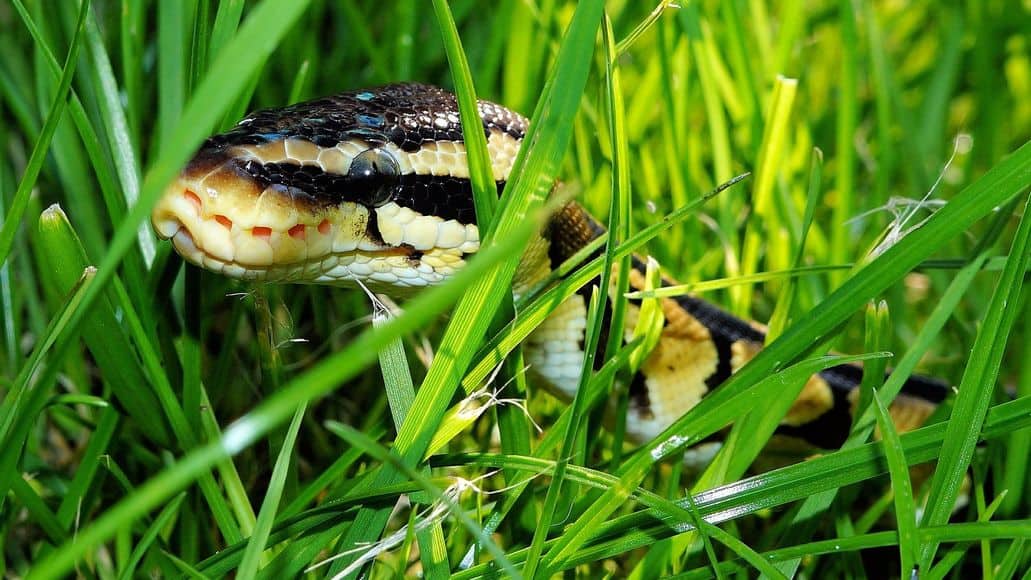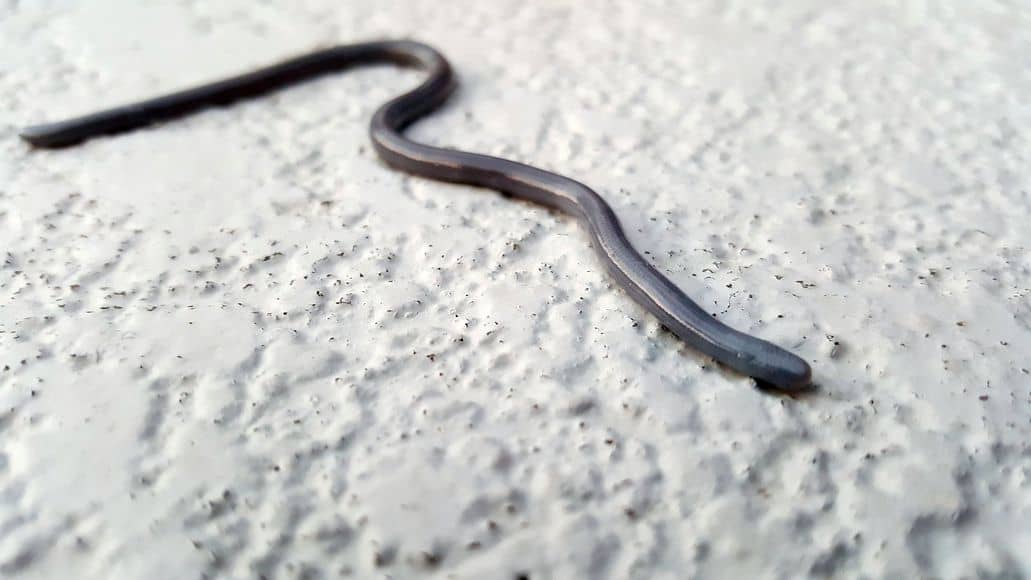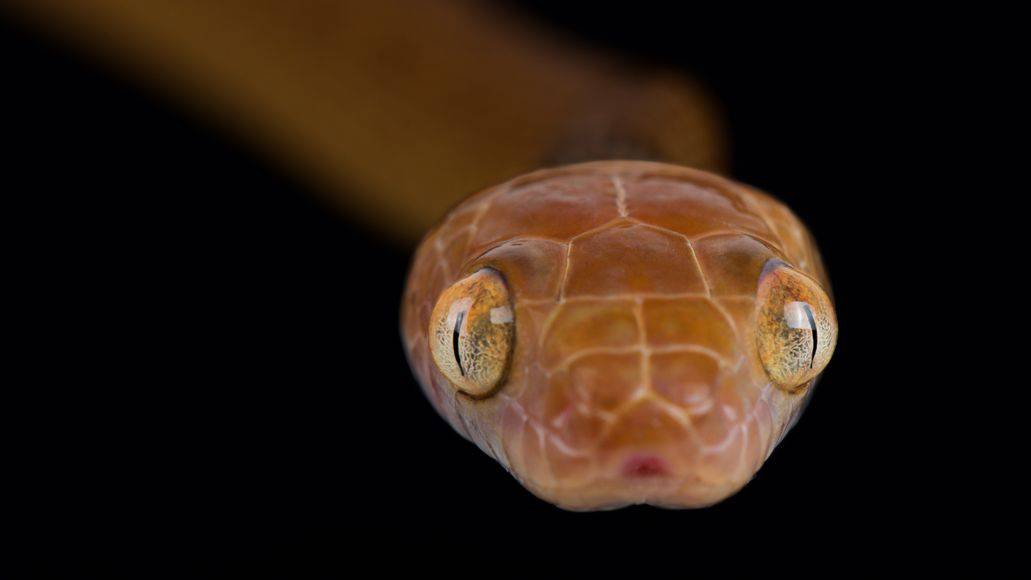
Well, that’s not true. And yet, it also is.
Confusing?
Don’t worry, it will make perfect sense in about 4 sentences.
We’ll answer the main question and also dive into everything else you need to know about snakes in Hawaii. Because, it turns out, it’s a pretty complicated issue.
Table of Contents
Are There Snakes In Hawaii?
Yes, there are, but they are not native to the islands. All snake species in Hawaii were introduced from elsewhere and are considered invasive species. With no natural predators, they pose a huge danger to the local ecosystem.
The only other state to not have any native snake species is Alaska. Maine has no venomous species, but it does have 9 native non-venomous snakes. All other states have poisonous snakes.
The Natural Environment of Hawaii
The Big Island, named Hawaii, is the largest island in the Hawaiian archipelago. It’s where you’ll find the World Heritage Volcanoes National Park, with its 2 active volcanoes – Mauna Loa and Kilauea. Just a few years ago, in May 2018, the park closed to the public because of a 30,000 foot plume of toxic ash clouds.

The whole island chain is volcanic. It is also a tropical paradise. With such extraordinary beauty all around – a veritable Garden of Eden – you have to wonder about the animals and plants that exist in this paradise.
The Maui Garden of Eden, for instance, is a real botanical paradise, found on the famous Hana Highway. It was used for the opening scene of the popular film ‘Jurassic Park’. You’ll find 26 acres of trees, colorful flowers, waterfalls and peace and quiet – the perfect home for birds, animals, and snakes.
Are there any serpent in this Garden of Eden?
No. While it might make a perfect home for them, there are none inside the park. But there are certainly snakes elsewhere in Hawaii. However, as mentioned, they do not really belong there, because none of them are native to the islands.
So how did they get there? In fact, how did any animals arrive on the Hawaiian Islands, considering they are the most isolated island group in the world?
The closest continent, North America, is more than 2,500 miles away. And the amount of plant and animal species on the island chain is staggering.
Incredible Biodiversity

The sheer biodiversity of the native plants and animals is amazing. There are luxuriant rainforests which are home to many trees, shrubs, insects, and birds. There are open grasslands. There are areas on the high volcanoes that get frost and some snowfall. In the island reefs, unlimited species of tropical fish swim around colorful coral.
It really makes you wonder where all these plants and animal species came from.
There are plants and animals that were brought to Hawaii by the humans who colonized the islands some 1,600 years ago. Yet there are other plants and animal species in Hawaii that are so different from organisms elsewhere in the world, that they just have to be native.
Colonizers Arrive By Sea Or Air
There seems to be only one scientific explanation for Hawaii’s flora and fauna. The native plants and animals must have descended from simpler organisms. Those made their way to the islands long, long ago, through the air or across the water, coming from far-flung continents and islands.
Before humans arrived in Hawaii, there were no large animals to eat plants and hinder their domination. Today, plants no longer rule the islands.

The degradation of this beautiful paradise started when Polynesian settlers came with their dogs, chickens, and pigs, as well as foreign plants. Once settled, this new life took over many native ecosystems. The new species had a strong negative impact on native plants and animals.
How does an invasive species change the state of an environment? They have feeding habits and behaviors that impact negatively the resources for native species. In other words: they either eat native species directly, or they eat (or otherwise diminish) the same food, reducing the amount available to native species.
Snakes are one of the more recent invasive species and one of the most damaging. Most (or perhaps all) are though the have been brought to Hawaii by humans, either as accidental stowaways on ships or by pet owners who wanted an exotic animal that then either escaped or was let free when it proved to be too much work.
Before that, Hawaii was one of the few places without snakes on earth. It is still one of the few places without native snakes, but there are more and more reports of snake sightings popping up around Hawaii.
Recent Reports Of Snakes In Hawaii
It is illegal to bring snakes to the islands. And yet, there are many reports of different snake species being spotted. Here are some recent reports that were made public.
- In 2013, a pedestrian in Chinatown came across a live Rainbow Boa Constrictor. These snakes aren’t venomous, but they subdue their prey with constriction. They display vibrant colors, producing Rainbow iridescences. A larger one was also run over on the Pali Highway in 2013. These snakes are native to Central and South America. They can grow to be 6 feet in length.
- In 2016, a live snake was captured by a worker on a Maui coffee farm. The snake was reported to the Hawaii Department of Agriculture on Maui and later identified as a non-venomous ball python. It measured 4 feet in length and was euthanized because of its poor condition. Nobody was able to provide any explanation as to how the snake got to the farm in Kaanapali.

- In June 2018, a live snake was captured at Honolulu Harbor. Inspectors from the Hawaii Department of Agriculture picked up the snake which measured one foot long. It was identified as a Western Terrestrial Garter Snake. This is a western North American species – a colubrid snake – possessing a mildly venomous saliva. They come in a wide variety of colors, but most have 3 longitudinal stripes – one on each side of the body and one in the center of the back.
- In October 2018 a boa constrictor was removed from a private home in Kea’au, Big Island.
- In February 2019 a corn snake was captured in a Waipahu backyard.
None of these snakes are commonly found in Hawaii, so they were all brought in as pets and either released or they escaped. But there are some species that are now found in the wild, and these are the ones currently causing the most problems.
Regular Snakes Of Hawaii
The following species of snakes are currently found in the wild in Hawaii. None of them are native to the islands, so they were brought over at some point in the past.
If we continue to see incidents like those listed above, we will soon be adding more species to this list, perhaps ones that are even more damaging than the following types.
Brahminy Blind Snake

Hawaii is now home to the Brahminy Blind Snake. It is a tiny black worm-like snake that is believed to have arrived on the islands via potting soil from the Philippines way back in the 1930s.
It is also known as the Flowerpot Snake and looks like an earthworm. It feeds on ants and termites. If you search, you’ll find this small snake sheltering under logs and leaves.
It is about 6 inches in length and is one of the smallest snakes in North America. It is a non-venomous snake.
Yellow-Bellied Sea Snake

The yellow-bellied sea snake belongs to the cobra family. It is a poisonous marine reptile that now calls the Hawaiian islands home (among many other places).
Can snakes bite you underwater? They can, but it rarely happens.
Fortunately for locals and tourists, sightings of the sea snake are rare. These snakes are timid and prefer to avoid people. They like to be out at sea and carried along by the sea currents.
They are only occasionally carried into shallow waters close to shore. While there have been plenty of sightings of these Yellow-Bellied Sea Snakes in Hawaiian waters, there have been no reports of bites.
Brown Tree Snake

Another non-native snake seen in Hawaii is the brown tree snake. It is aggressive and slightly venomous. The brown tree snake is actually native to eastern and northern coastal Australia, parts of Indonesia and New Guinea.
It is an arboreal, rear-fanged colubrid snake that will strike if aggravated and injects venom into its victim. It isn’t dangerous to an adult human.
The snake’s large eyes have a vertical pupil which allows for hunting at night. The snake enjoys meals of Hawaii’s native birds, eggs, lizards and small mammals.
The brown tree snake was first spotted on the Island of Guam in the 1950s. It is the species that is currently most threatening to Hawaii’s ecosystem, in part because it breeds so rapidly.
Prolific Breeding Habits
These snakes have bred fast so that there are thousands per square mile in some areas. In this snake, egg fertilization doesn’t immediately follow mating. A reproducing female is able to store the male’s sperm for up to several years until she wants to use it.
Fertilized eggs are deposited in hollow logs and caves so they don’t dry out. Two clutches of up to 12 can be deposited in a year. The female doesn’t incubate the eggs and doesn’t wait around to care for the young.
In Guam, the population of this snake as an invasive species is well documented, with there being thousands of snakes per square mile. They have been responsible for many power outages across the island, as well as causing the local extinction of native bird and lizard species.
Whether the snakes were deliberately introduced to the island to control rodent populations, or whether the snakes were stowaways aboard military aircraft, they have devastated the island’s native bird populations.
A Cruel Eradication Plan
It is thought that this snake made its way to Hawaii by aircraft. However they got there, these snakes are an unwelcome, invasive species and they’re a threat to Hawaii’s fragile ecosystem.
The snake has no predators and they have killed off native birds and animals in Guam and are beginning to do the same in Hawaii. In 2013, the American government had a plans to bombard Guam with toxic dead mice, in an attempt to curtail the spread of these invasive snakes. Animal rights activists were outraged.
They argue that human stupidity and carelessness is the cause of the problems now faced with the brown tree snake. They say the snakes never asked to be stowaways on planes to unknown territory.
No matter how they got to be on Guam, they are now a menace. That is why government scientists came up with their plan of using toxic mice. Taking advantage of the serpent’s willingness to eat anything seemed like a good idea.
They may yet have to resort to these types of drastic measures, but for now, they are trying to curtail the problem in a less aggressive fashion.
‘Arresting’ Illegal Brown Tree Snakes
Very recently, the Hawaii Department of Agriculture has looked at a more humane way to reduce the snake’s numbers: importing 4 brown tree snakes.
How could that possibly help?
Scientists believe this may be the key to prevent the species from establishing itself on the islands. First of all, these new snakes will be sterile, so there is no danger of them reproducing.
The Hawaii Board of Agriculture wants the sterile male snakes to be used in a dog detection program. The idea is for the dogs to be trained to sniff out any brown tree snakes that arrived illegally by plane or ship.
Hopefully this works. Ecologists and wildlife officials are concerned that the brown tree snake could invade other islands. For decades, Hawaii has feared the introduction of this snake and the same kind of havoc it has caused on Guam and they are desperate to prevent that.
Snakes In Hawaii: Final Thoughts
Many of the snake species found in Hawaii recently have something in common – they’re popular as pets. Non-venomous boas and pythons are sought-after pet snakes. And these snakes keep showing up in Hawaii.
Obviously, they have likely been smuggled in. Irresponsible pet owners ended up finding them more work than they thought and simply dumped them somewhere. For that reason, snakes are illegal in Hawaii. The state can’t risk them coming in and threatening the already fragile, at-risk ecosystem.
Hawaii offers an amnesty program for people who turn in illegal snakes, or other illegal animals. They ask no questions, so anyone in possession of these illegal animals can drop them off at the appropriate facilities, without risk a fine or jail time.
Hopefully this will encourage pet owners to never release a snake into the wild and help Hawaii as it continues to make attempts to preserve its native species.
For some additional reading, check out our article titled “Are There Snakes In Japan?” Since Japan is also an island nation, it should add to your understanding of the way snakes have spread around the world to six of seven continents.
And if you are looking for a tropical island devoid of snakes, check out Cook Island or Kiribati in the Pacific. Another option is Saint Martin, which is the only known Caribbean island that does not have any snakes.
Leave a Reply